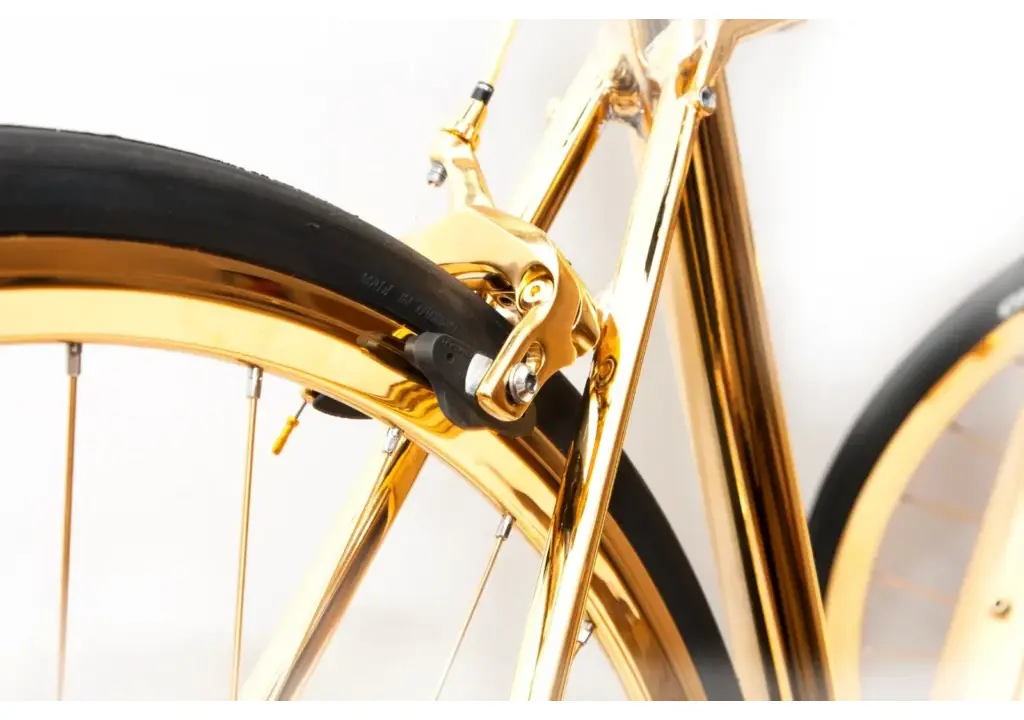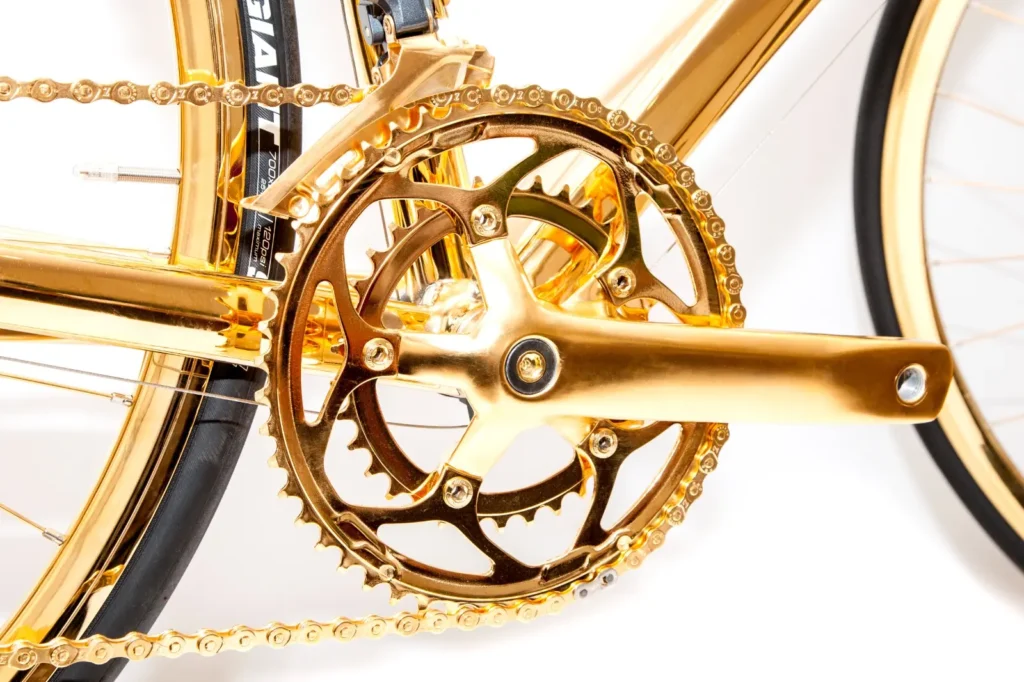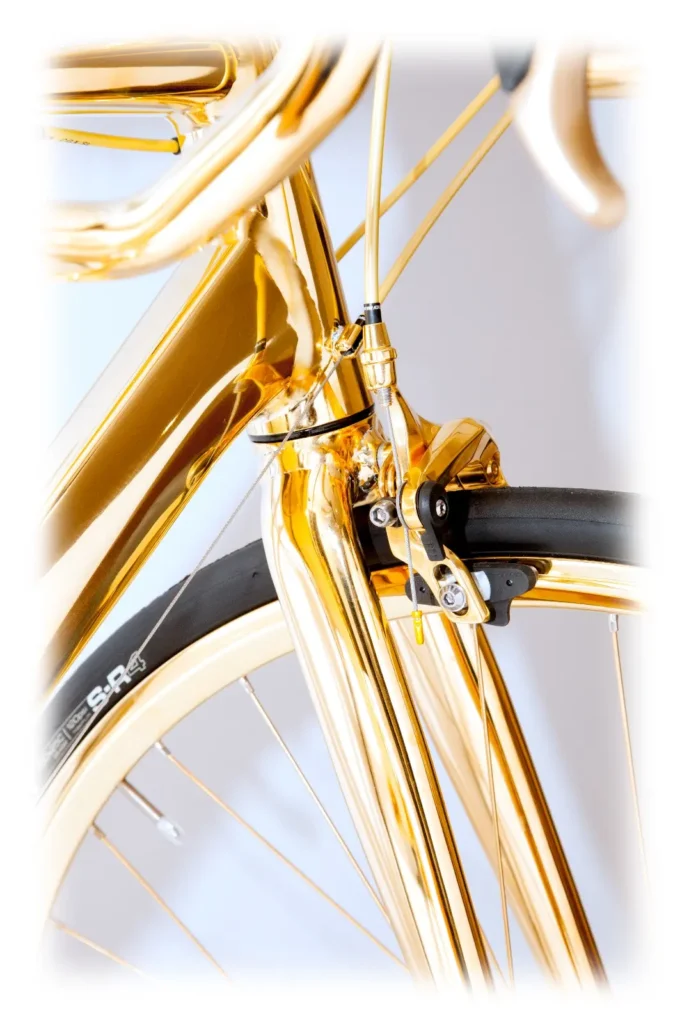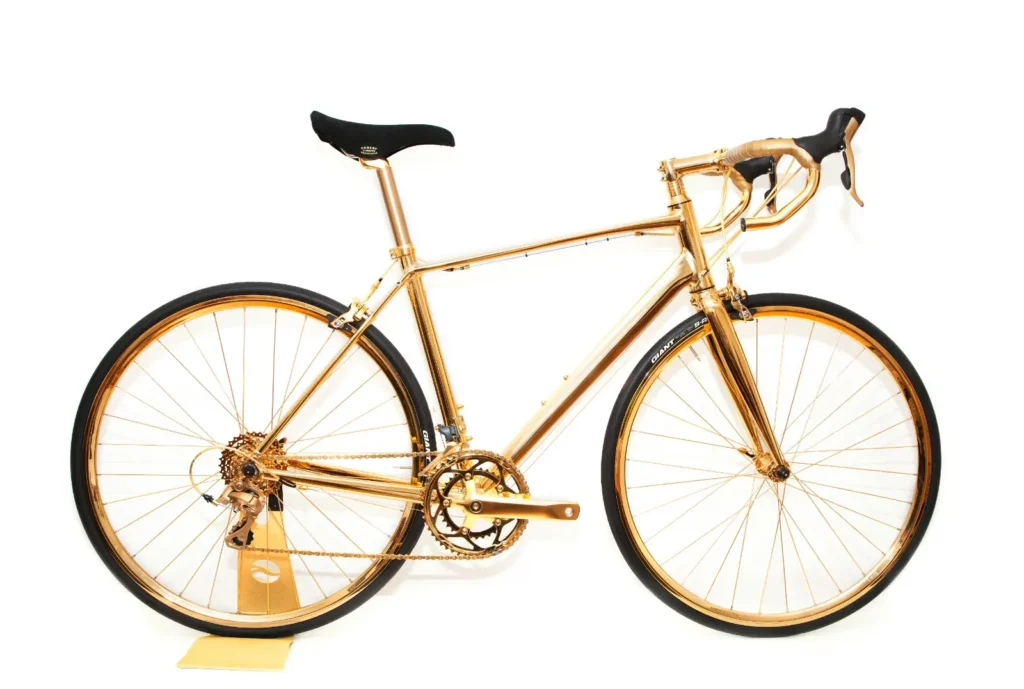World’s Most Expensive Bicycle Made of Gold

Goldgenie the London-based luxury customizer known for turning everyday tech and accessories into jewelled statements. Grabbed headlines in 2014–2015 when it unveiled a full 24-carat Gold Racing Bicycle. What started as a modest Giant road frame became a gilded objet d’art: frame, rims, spokes, chain, cogs and crank all gleamed like a museum piece. The bike was marketed as a limited-edition luxury item (with optional diamond work), and quickly earned a reputation as one of the most expensive bicycles ever made.
What exactly is it?
Goldgenie took a production road bike (widely reported as a Giant Defy series aluminium frame) and applied an extensive gold finish to nearly every visible metal surface handlebars, fork, frame, rims, cassette, chain and even the spokes in some photos. Non-metal parts such as tyres and the suede saddle were left in darker tones to provide visual contrast. Some press and company materials also mention bespoke diamond accents as an optional extra for collectors.
How it’s made the gilding process
Goldgenie uses professional precious-metal finishing techniques rather than simple spray paint. Reports and the company’s own writeups describe electroplating and gold-leaf finishing that create a continuous 24K surface over aluminium and other components. The work is artisanal and intensive: parts are disassembled, prepared, plated or leafed, then reassembled and fine-tuned so the finished bike both looks and functions as a bicycle (albeit an impractical one for everyday riding).
Price tags and conflicting figures
Different outlets have reported slightly different asking prices over the years. When the bike first appeared in 2014–2015 the commonly quoted retail figure was £250,000 (roughly $327,000 at the time). Other writeups and later press pieces have given higher valuations. Or special editions with diamonds listed at several hundred thousand dollars; Goldgenie itself has in later years referenced bespoke 24K Gold Bikes with variable pricing depending on options. In short: exact price depends on specification and reporting, but there’s no doubt it’s in the high-hundreds-of-thousands range comfortably inside the “world’s most expensive bicycle” conversation.
Performance vs. Pageantry
Technically the gilded bike remains a functioning road bicycle it still has working gears. Brakes and tyres but its true purpose is symbolic. Gold adds weight and requires maintenance; gold-plated components won’t survive rough mechanical wear. As well as untreated alloy parts without careful servicing. Practically speaking, owners treat these as display pieces or occasional parade use items rather than race day hardware. Critics called it a “shameless exercise in opulence,” while admirers framed it as wearable art that celebrates craftsmanship.
Value, insurance and collectibility
For a buyer, the value proposition is not “gold bullion” (the gold layer is thin relative to solid-gold construction) but rarity, branding and workmanship. The true cost includes craftsmanship, brand premium and optional embellishments like diamonds. Owners would typically insure such an item as fine art or luxury property. Not as normal sporting equipment. Resale is niche: wealthy collectors, celebrities, or luxury-goods investors are the natural market but liquidity is limited. So buyers should expect a bespoke resale process rather than a brisk market.






Cultural impact and why it matters
Goldgenie’s gold bicycle is shorthand for a recurring luxury trope. Taking a mass-produced object and elevating it into a statement about wealth, taste and showmanship. It sparked media fascination (and social media memes) because the contrast was so stark a utilitarian two-wheeler dressed like high jewellery. The project reinforced Goldgenie’s positioning as a house that turns tech and transit into conversation pieces.
Care, maintenance and ownership realities
If you somehow acquire one, expect:
- careful, climate-controlled storage to avoid tarnish and preserve finish;
- specialized servicing from technicians comfortable disassembling plated parts;
- higher insurance premiums and documentary provenance to verify authenticity;
- practical limitations for regular riding because grit, chain wear and road debris are the enemy of plated finishes.
Verdict: art, advertising or absurdity?
Whether you see Goldgenie’s 24K Gold Bicycle as genius marketing, an extravagant art piece or a comical excess depends on your perspective. It’s not the most functional bike you can buy, nor is it the most gold-heavy (solid-gold constructions elsewhere have been hyped). But it succeeds at what Goldgenie intended: creating a headline-grabbing. Impeccably finished object that lives at the intersection of cycling culture and luxury spectacle. For collectors and brand fetishists it’s a trophy. For everyone else it’s a shiny reminder that almost anything can be turned into an ultra-luxury product for the right price.

